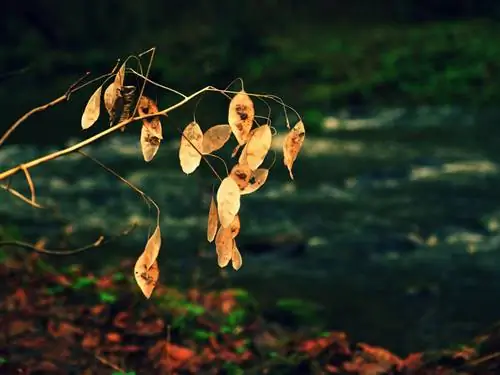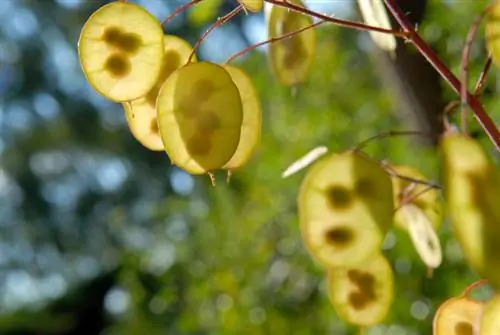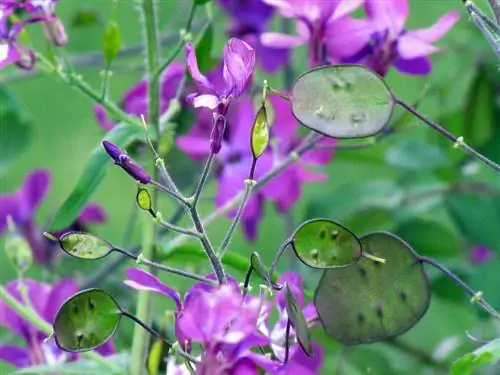- Author admin [email protected].
- Public 2023-12-16 16:46.
- Last modified 2025-01-23 11:20.
The annual silver leaf (Lunaria annua) is best known for its eye-catching seed heads, which are often cut off and brought into the house for decorative purposes due to their parchment-like structure. The living plants, on the other hand, do not need to be brought into the house as they can cope well with winter temperatures.

Is silver leaf hardy?
The annual silver leaf (Lunaria annua) is hardy and can survive frosty temperatures without any problems. The plant is biennial, producing only leaves in the first year and flowers and seeds in the second year. No additional winterization measures are necessary.
Various plants named silver leaf
Under the name silver leaf, hobby gardeners occasionally come across the so-called white felted groundsel, which is sold in specialist shops under the Latin names Jacobaea maritima and Senecio bicolor. This plant is not frost hardy and in Europe can only be overwintered indoors. However, with ragwort the effort involved in overwintering is only worth it to a limited extent. The annual silver leaf of the genus Lunaria (Lunaria annua), on the other hand, is unproblematically frost hardy; after all, it also occurs in nature in numerous places without human intervention.
Misconceptions about the lifespan and hardiness of silverleaf
When it comes to Lunaria annua, there are three factors that contribute to many gardeners' uncertainty about the lifespan and frost resistance of this plant:
- the plant name
- actual lifespan
- the inconspicuous appearance of the plant in its first year
The so-called annual silver leaf is actually not an annual, but rather a biennial. That's why after sowing the seeds, you won't be able to enjoy flowers and seed pods until the second year. After flowering, the plant dies on its own; this is mistakenly interpreted by some gardeners as a lack of winter hardiness. Some silver leaf specimens also fall victim to weeding in the bed because the plants only look inconspicuous in the first year and are then sometimes torn up during “spring cleaning”.
Tips for the successful cultivation of silver leaf
To ensure that your silver leaf gets through the winter well in the garden, you should not cover it with mulch or leaves. Otherwise you could damage the hardy plants through the formation of mold and waterlogging. Only in very dry winters with clear frosts should water be moderate so that the plants do not dry out. Every year, take care of the propagation of the silver leaf by sowing the seeds in suitable locations in order to regularly receive flowers and seeds from the biennial plant.
Tip
So that the poisonous seeds of Lunaria annua, whose leaves can even be used in food, cannot accidentally cause damage, they should be stored in a clearly labeled screw-top jar out of the reach of children. Particular caution also applies when decorating with seeds in the house when children or pets are present.






